
We collect basic website visitor information on this website and store it in cookies. We also utilize Google Analytics to track page view information to assist us in improving our website.
.png)
By: Christine Ignas, ESL/ELD Lead Teacher at SMCDSB
Ontario primary teachers are tasked with teaching the skills and strategies for reading and writing in English as informed by the Ontario Ministry of Education’s Language Curriculum. Primary teachers often follow the guidance of the Effective Literacy Instruction (4-6) and Guide to Effective Instruction in Reading (K-3) and provide time for word study so students recognize and can write and read common spelling patterns.
As Canadian born and newcomer multilingual learners join primary classes, teachers must then consider the learning needs of students who speak languages other than English at home. Some of these students may also not yet speak English and so are learning to use English vocabulary and language structures at the same time as learning to read and write as part of kindergarten, grade 1 and 2 classrooms.
Teachers sometimes use the online interactive resources such as www.starfall.com’s ABC webpage to help young students develop phonemic awareness of the 26 letters of the alphabet. Online resources offer easy to access, free games for young learners while at school or home. It is important to note that these online resources are considered an introduction to the sounds and phonemes of the English alphabet not effective teaching on their own. FlyLeaf Publishing is offering their e-books that are organized by their phonics scope and sequence for free for the 2020-2021 school year. These materials offer educators another tool to provide ELLs opportunities to identify and use the sound symbol patterns in the English language. Identifying the phonemes or sounds in the English language and connecting them to the symbol patterns of the written letters is requires a lot of practice and explicit teaching.
Educators in kindergarten and primary grades are aware that the English language has more than 26 sounds. It is important to talk about this more so all educators are aware of the importance of explicit teaching of the sounds that letter combinations make in different words that are part of curriculum learning. Drawing student’s attention to the various letter combinations, the pronunciation of these sounds and how to record them as standardized spelling is important learning for all students in primary grades and beyond.
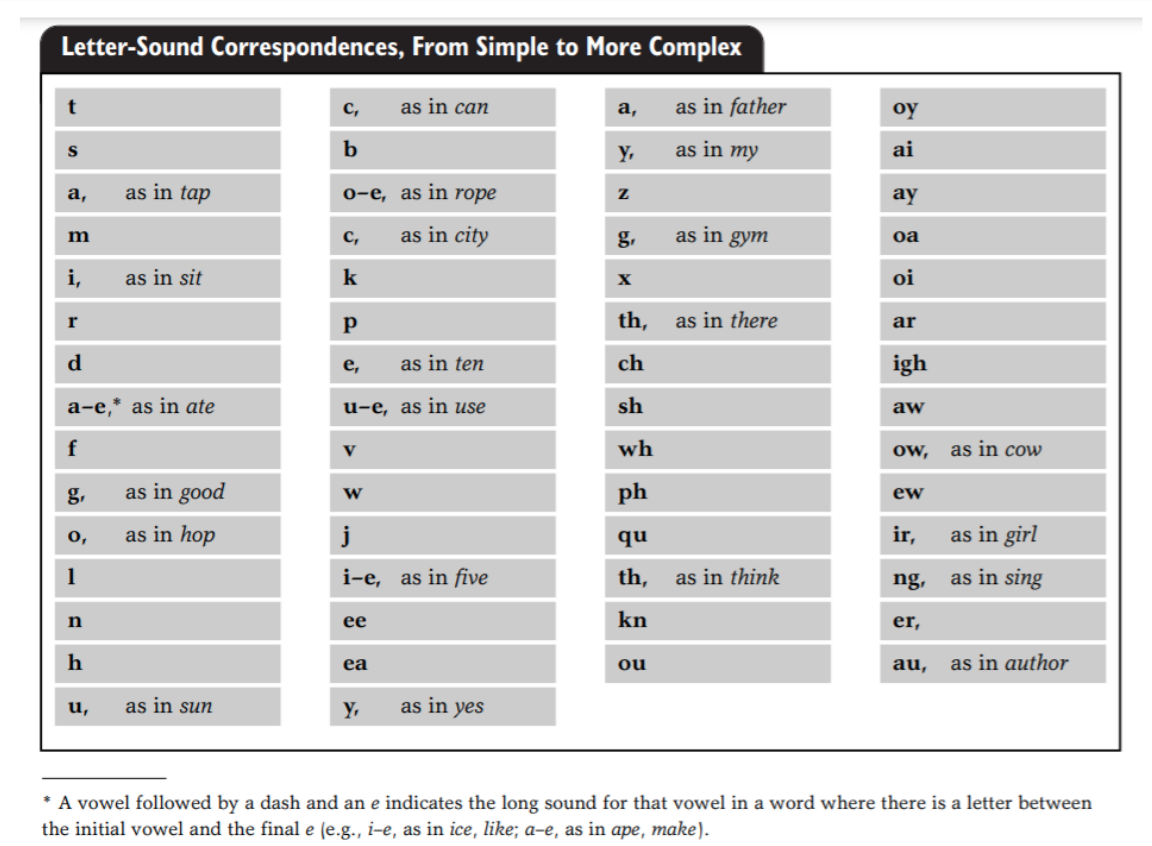
Source: http://www.eworkshop.on.ca/edu/resources/guides/Reading_K_3_English.pdf#page=272
In the intermediate and secondary grades, teachers follow the guidance of the Adolescent Literacy Guide (2016) to inform instruction of reading and writing. While it is detailed and intended for English speaking students, it does not offer direction for teachers who teach ELLs at the very beginning steps of learning English. The intermediate and senior aged students can often benefit from explicit instruction about the sounds and standard spelling patterns found in the English language. Teachers of intermediate or secondary ELLs can follow the guidance of resources Effective Literacy Instruction (4-6) and Guide to Effective Instruction in Reading (K-3) while adjusting materials for the interest and age of the older students. Teachers can also refer to the guided reading lessons included with each of the ERGO Financial Literacy texts that were written for intermediate-senior age students.
The Ontario Ministry of Education’s STEP Resources for ELLs note that ELLs will work on “recognizing some sound/symbol patterns” in STEP 3 (primary) or STEP 1 (junior/intermediate/secondary) of the STEP OLB Continua.
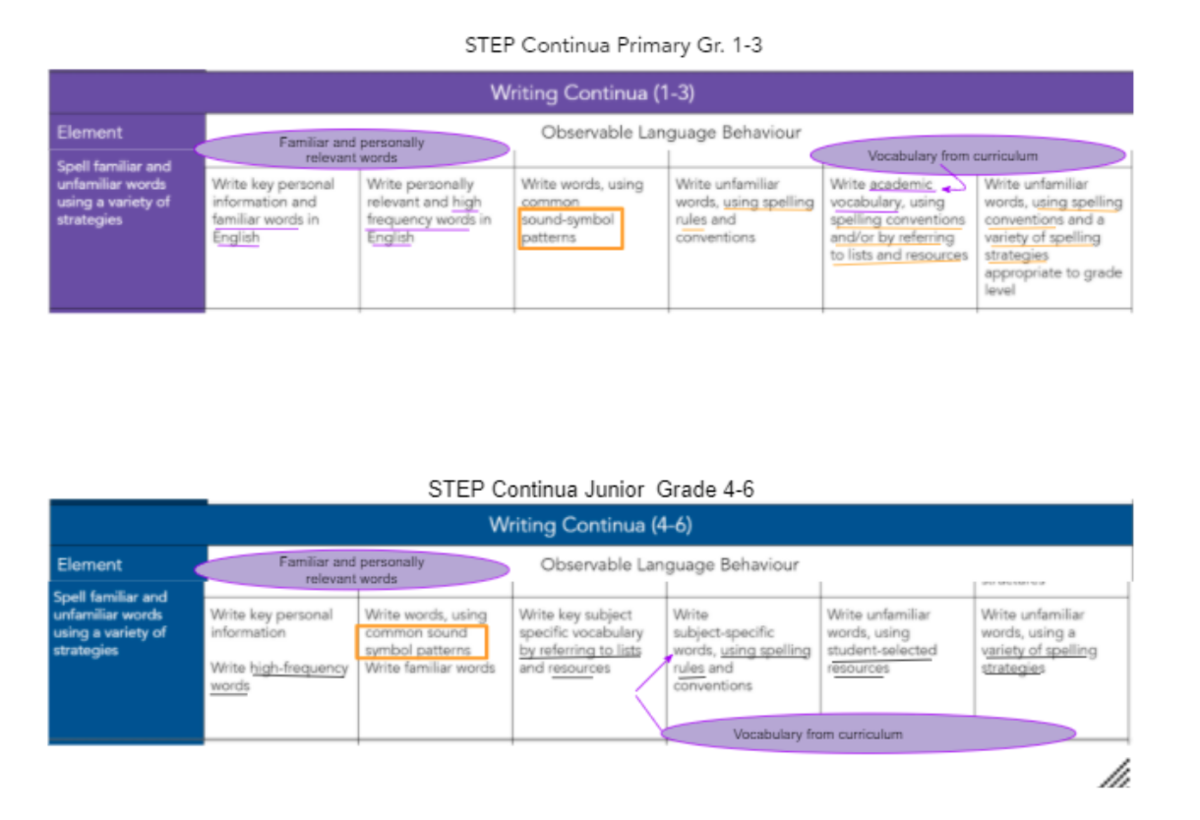
This informs instruction for teachers of ELLs to integrate this learning as part of curriculum learning. This means educators of ELLs in any grade must provide opportunities for students who are beginning to learn English to see and hear the various sounds and spelling patterns in academic words within the context of curriculum learning.

Source: http://www.edu.gov.on.ca/eng/curriculum/elementary/social-studies-history-geography-2018.pdf#page=81
In grade 2, while learning about talking and learning about community traditions a teacher may choose to focus on the ‘ur’ spelling pattern in the word turkey. The teacher may write down other words that the student is familiar with or learning, such as Thursday, hurt, turn and burp.
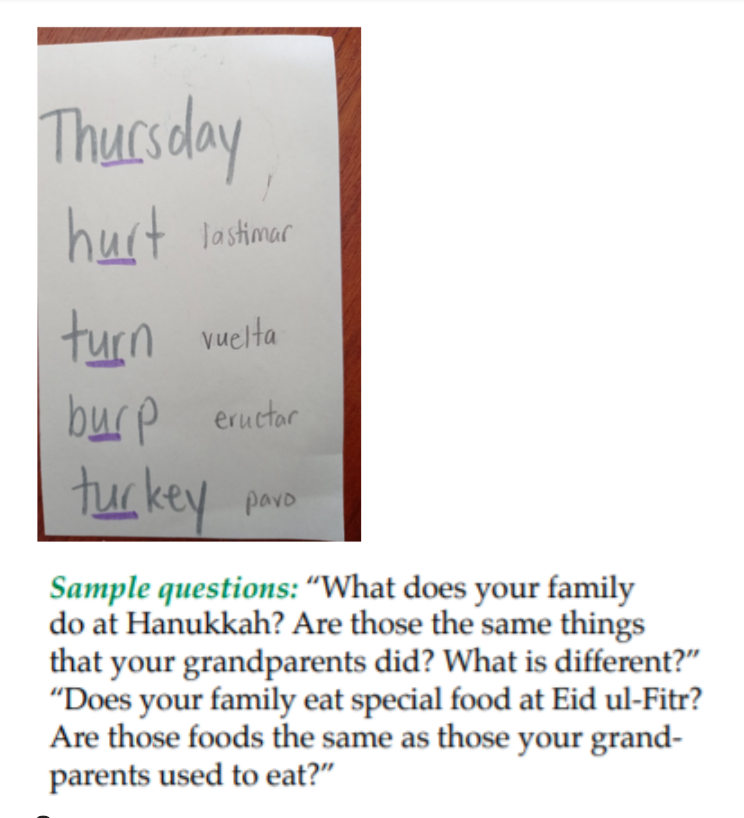
Source: http://www.edu.gov.on.ca/eng/curriculum/elementary/social-studies-history-geography-2018.pdf#page=81
The next day, the teacher chooses to focus on the spelling pattern ‘ea’ for the word eat. The teacher chooses this word because she noticed that the student spelled it ‘et’ the day before in his writing. So, today she spends a few minutes writing familiar ‘ea’ words and has the student practice writing, reading and circling the focus sound-symbol spelling pattern. The chosen words are familiar to the student, can be quickly translated on an online translation website (such as Google Translate or Microsoft Translate) and only have 2-3 phonemes (sounds). This ensures the new learning is within the the student’s zone of proximal development.
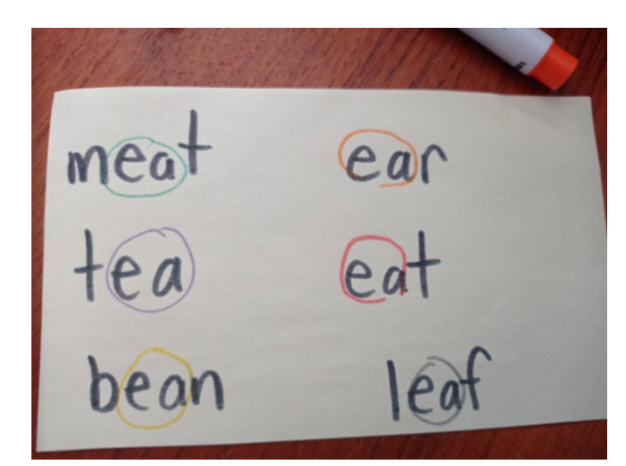
The teacher continues to build on this learning while using the student’s daily writing to inform the brief conferences the following day that are focused on word study and the sound symbol relationships in the English language.
In an example from a grade 7 teacher exploring Physical Patterns in a Changing World from the geography curriculum the teacher chooses to focus on the following expectation:
A.1.4: assess ways in which different peoples living in similar physical environments have responded to challenges and opportunities presented by these environments, and assess the sustainability of these responses.
With a small group of English language learners working on STEP 1-3 from the STEP Observable Language Behaviours (OLB) Continua:
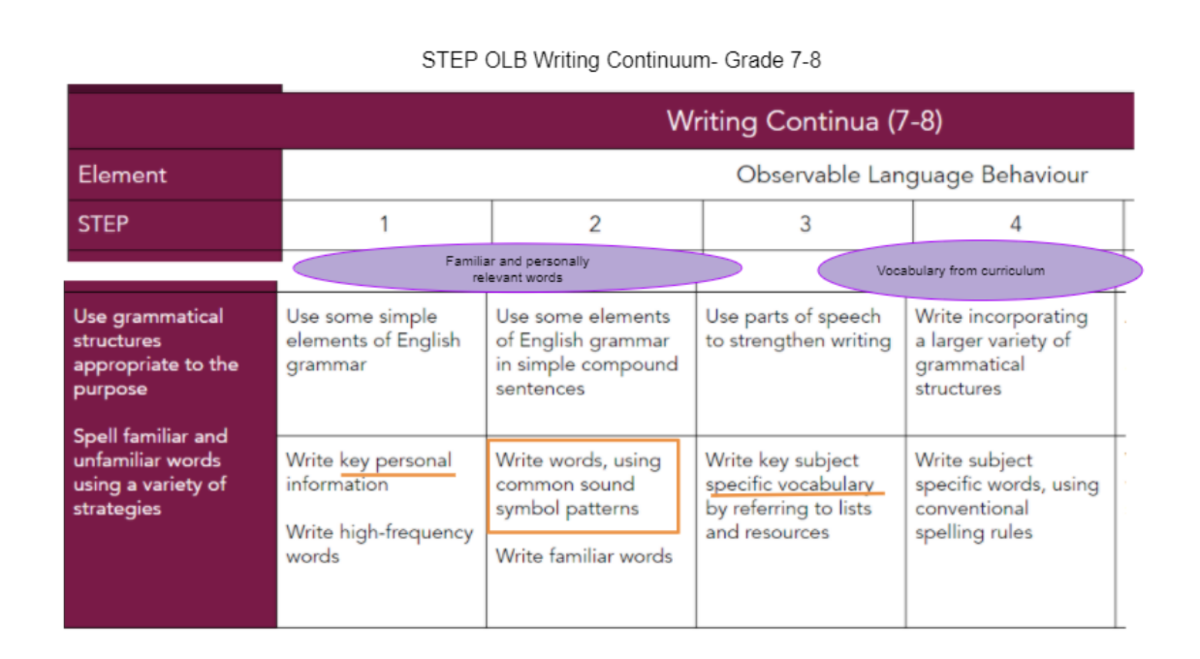
Source: Intermediate STEP OLB Continua
As part of this learning the teacher invites students to find a a place they know well or have visited on Google Maps. The students find pictures of mountains, beaches or cities they have lived in or visited prior to moving to Canada. The students write simple sentences in English or in their home language to describe the landforms in the location and how people live in these areas.
The teacher decides that the word ‘sustainable’ is important for this conversation but acknowledges that though the multilingual learners can read and write in their home languages but also they are at the stage of learning to write’ high frequency words’ related to ‘key personal information’ in English. The teacher chooses to invite students to translate the word ‘sustainable’, but also take a few minutes to explicitly teach the ‘ai’ spelling pattern.
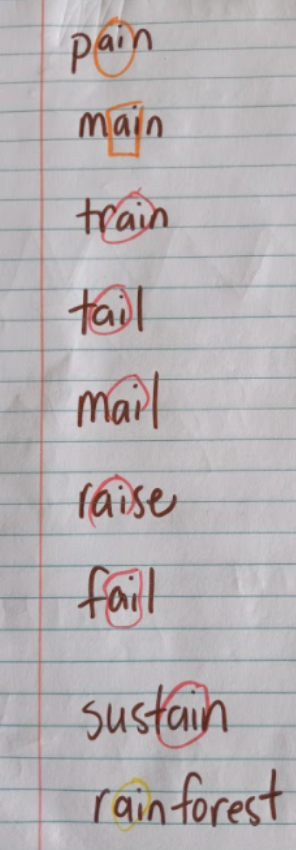
The teacher returns to this spelling pattern the next day and asks the students to practice writing the same ‘ai’ words and use 1-2 of them orally in a sentence. The teacher then models using the word ‘sustainable’ in 3 sentences using the information the students shared the day before about the locations they have visited.
On the third day, the students are invited to write a sentence and a question using the word ‘sustainable’ to describe the familiar locations they found on Google Maps and wrote about 2 days earlier.
By taking few minutes each day to focus on the one big idea while starting with prior knowledge or experiences of the students, the teacher finds opportunities to acknowledge the current English skills of the students while continuing to build their knowledge of the English spelling patterns or sound-symbol relationships and key academic vocabulary that transfers between subject areas as guided by the STEP OLB Continua.
Using the STEP Framework and considering the importance of developing phonemic awareness and phonics skills while continuing to provide time for word study will guide instruction for ELLs of any age who in the process of developing academic English skills. Responding to student needs within the context of curriculum learning provides the platform for engaging instruction where the student can build on prior knowledge of language rules.
What are other tools, strategies or resources that you use to build phonemic awareness, phonics skills (for more than the 26 letters) and for word study in support of the language development of ELLs in your classroom?

